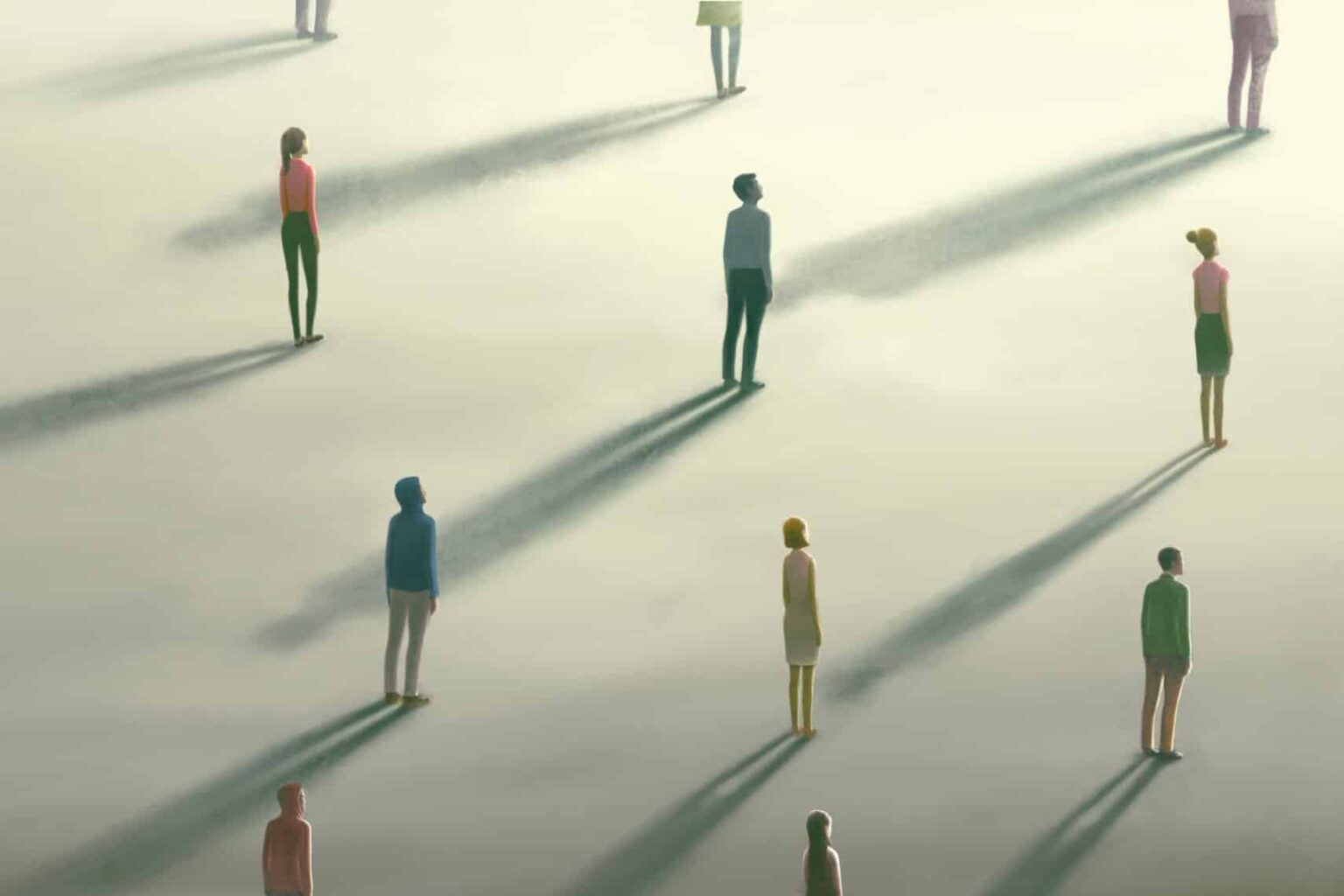Introduction
Loneliness is more than just a fleeting emotion—it’s a profound psychological state that impacts mental, emotional, and even physical health. In our increasingly connected yet paradoxically isolated world, loneliness has become a widespread issue, affecting individuals across all age groups and cultures. The significance of social life is often underestimated, yet research consistently shows that meaningful human connections are essential to our overall well-being.
This article delves into the psychology of loneliness: what causes it, its impact on our brains and bodies, and most importantly, why building a rich social life is vital for a fulfilling and healthy existence.
What Is Loneliness?
Loneliness is the emotional pain that arises when there is a gap between the social connections you want and those you actually have. It is important to note that loneliness is not the same as being alone. Solitude can be healthy and even enjoyable, while loneliness is a negative emotional experience characterized by feelings of isolation, emptiness, and disconnection.
Types of Loneliness:
- Emotional Loneliness – Missing a deep emotional bond, often caused by the loss of a partner or best friend.
- Social Loneliness – Lack of a broader network of friends, co-workers, or acquaintances.
- Existential Loneliness – A profound sense of disconnection from the world or life itself.
The Psychological Causes of Loneliness
Loneliness is not caused solely by physical isolation. Many internal psychological factors can contribute:
- Low self-esteem – Feeling unworthy of love or friendship.
- Fear of rejection – Avoiding social interactions due to past trauma or anxiety.
- Depression or anxiety – These conditions often push people into isolation.
- Perfectionism – High expectations in relationships that are rarely met.
Moreover, major life transitions such as moving to a new city, changing jobs, or experiencing a breakup can trigger or intensify loneliness.
The Neuroscience of Loneliness
Neuroscientists have found that loneliness activates the same areas of the brain as physical pain. This biological reaction explains why loneliness “hurts” and can become chronic if not addressed.
Key findings include:
- The dorsal anterior cingulate cortex and insula, associated with physical pain, are also active during social exclusion.
- Chronic loneliness increases cortisol levels, the body’s primary stress hormone.
- It affects the default mode network—the brain’s area related to self-reflection, often heightening negative thoughts.
This science confirms that loneliness isn’t “just in your head.” It’s a full-body experience with serious implications.
The Physical and Mental Health Impact of Loneliness
Loneliness isn’t just a mental health issue—it can drastically affect physical well-being.
Physical Effects:
- Increased risk of heart disease, stroke, and high blood pressure
- Weakened immune system
- Poor sleep quality
- Higher inflammation levels
Mental Effects:
- Elevated risk of depression and anxiety
- Greater chances of cognitive decline and Alzheimer’s disease in older adults
- Increased risk of suicidal ideation
According to research by Julianne Holt-Lunstad, loneliness is as damaging to health as smoking 15 cigarettes a day. This powerful statistic underscores why addressing social disconnection is a public health priority.
Why Social Life Matters
Humans are inherently social creatures. From birth, we rely on others for survival, development, and identity formation. Social life provides:
- Emotional Support – Friends and loved ones help us cope with stress and celebrate successes.
- Cognitive Stimulation – Conversations, debates, and shared experiences sharpen our minds.
- Sense of Belonging – Feeling part of a group or community boosts confidence and reduces alienation.
- Identity Formation – Interactions with others shape our beliefs, values, and sense of self.
In essence, social life nurtures the mind and spirit in ways that are impossible to replicate in isolation.
The Role of Technology: A Double-Edged Sword
In today’s digital era, it’s easier than ever to connect—yet many people feel more isolated than ever before. Social media, texting, and video calls offer convenience, but they can lack the depth of in-person connections.
Pros of Digital Connection:
- Easier to stay in touch across distances
- Access to online communities with shared interests
- Support for people with disabilities or social anxiety
Cons of Digital Connection:
- Superficial interactions can’t replace real emotional intimacy
- “Comparison culture” on social media can heighten feelings of inadequacy
- Reduced face-to-face interactions can lead to social skills erosion
Thus, while technology can be a helpful tool, it should supplement—not replace—real-life social bonds.
How to Combat Loneliness and Build a Strong Social Life
Overcoming loneliness requires both inner work and outward effort. Here’s how:
1. Acknowledge and Accept Your Feelings
Recognize that loneliness is a signal—not a weakness. Like hunger signals the need to eat, loneliness signals the need for connection.
2. Strengthen Existing Relationships
Reach out to family or old friends. Sometimes revitalizing a dormant connection can be just as fulfilling as making a new one.
3. Engage in Group Activities
Join clubs, volunteer organizations, hobby groups, or community classes. Shared activities build natural rapport.
4. Practice Social Skills
Start with small interactions—greeting neighbors or chatting with co-workers. These micro-connections can evolve into meaningful relationships.
5. Limit Social Media Use
Reduce screen time and invest in real-world social opportunities.
6. Seek Professional Help
Therapists can help identify internal barriers like fear or trauma that may be preventing deeper connections.
The Importance of Quality Over Quantity
It’s not about how many people you know—it’s about the depth of your relationships. Studies show that even one or two close relationships can protect against loneliness and boost life satisfaction.
Loneliness Across Life Stages
Loneliness doesn’t discriminate by age, but it manifests differently across the lifespan:
- Children and Teens: Social rejection, bullying, and online pressure can cause intense loneliness.
- Young Adults: Transitions (college, first job, moving away) often result in disconnection.
- Middle Age: Career pressures, divorce, or parenting isolation can contribute.
- Seniors: Loss of spouse, retirement, and mobility issues can lead to deep loneliness.
Understanding these patterns can help us provide targeted support and empathy.
The Role of Culture and Community
Cultural norms significantly shape how we experience and cope with loneliness. In collectivist societies, community and family networks offer buffers against isolation. In contrast, individualistic cultures like the U.S. may unintentionally encourage emotional self-sufficiency at the expense of communal bonds.
Building community infrastructure (parks, libraries, community centers) and promoting intergenerational interaction can play a major role in reducing widespread loneliness.
Final Thoughts: Reclaiming Connection in a Disconnected World
Loneliness is not just a personal issue—it’s a societal one. As individuals, we can work to open up, reach out, and build genuine relationships. As communities, we must recognize social connection as a critical component of health and happiness.
By fostering deeper relationships and making space for others, we don’t just enrich our own lives—we help create a more compassionate and connected world.
FAQs
1. What causes loneliness even when I’m around people?
Being surrounded by others doesn’t guarantee emotional connection. If conversations lack depth or authenticity, loneliness can still occur.
2. Can loneliness really impact physical health?
Yes. Chronic loneliness raises stress levels, weakens immunity, and increases the risk of heart disease, dementia, and early death.
3. Is social media making us more lonely?
It can. While social media helps us stay connected, it often promotes superficial interactions and comparison, which can worsen loneliness.
4. How is loneliness different from depression?
Loneliness is a feeling of disconnection, while depression is a broader mental health condition that may include sadness, apathy, and physical symptoms. However, they often co-occur.
5. Can introverts suffer from loneliness?
Absolutely. While introverts may need less social interaction, they still crave meaningful relationships and can feel lonely without them.
6. What are some good ways to meet new people?
Volunteering, taking classes, joining local interest groups, or attending community events are all excellent ways to form new connections.
7. Are elderly people more likely to be lonely?
Yes, especially if they lose partners, stop working, or experience reduced mobility. Social support is crucial for seniors’ well-being.
8. Is loneliness a sign of weakness?
Not at all. It’s a universal human experience and a natural emotional signal indicating a need for connection.
9. How can I help a friend who seems lonely?
Reach out regularly, invite them to social events, and offer a listening ear without judgment. Small gestures can make a big difference.
10. Can therapy help with loneliness?
Yes. Therapy can help uncover underlying issues, build self-esteem, and teach social skills to foster healthier relationships.







